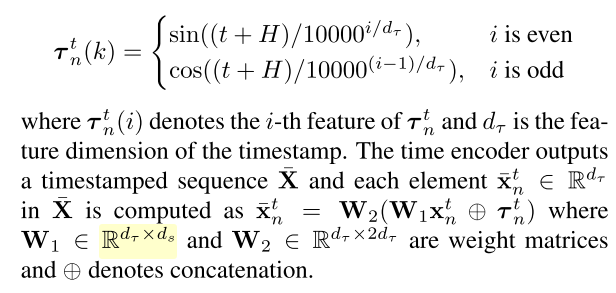AgentFormer
This repo contains the official implementation of our paper:
AgentFormer: Agent-Aware Transformers for Socio-Temporal Multi-Agent Forecasting
Ye Yuan, Xinshuo Weng, Yanglan Ou, Kris Kitani
ICCV 2021
[website] [paper]
Overview
Important Note
We have recently noticed a normalization bug in the code and after fixing it, the performance of our method is worse than the original numbers reported in the ICCV paper. For comparision, please use the correct numbers in the updated arXiv version.
Installation
Environment
- Tested OS: MacOS, Linux
- Python >= 3.7
- PyTorch == 1.8.0
Dependencies:
- Install PyTorch 1.8.0 with the correct CUDA version.
- Install the dependencies:
pip install -r requirements.txt
Datasets
- For the ETH/UCY dataset, we already included a converted version compatible with our dataloader under datasets/eth_ucy.
- For the nuScenes dataset, the following steps are required:
- Download the orignal nuScenes dataset. Checkout the instructions here.
- Follow the instructions of nuScenes prediction challenge. Download and install the map expansion.
- Run our script to obtain a processed version of the nuScenes dataset under datasets/nuscenes_pred:
python data/process_nuscenes.py --data_root <PATH_TO_NUSCENES>
Pretrained Models
- You can download pretrained models from Google Drive or BaiduYun (password: 9rvb) to reproduce the numbers in the paper.
- Once the
agentformer_models.zipfile is downloaded, place it under the root folder of this repo and unzip it:This will place the models under theunzip agentformer_models.zipresultsfolder. Note that the pretrained models directly correspond to the config files in cfg.
Evaluation
ETH/UCY
Run the following command to test pretrained models for the ETH dataset:
python test.py --cfg eth_agentformer --gpu 0
You can replace eth with {hotel, univ, zara1, zara2} to test other datasets in ETH/UCY. You should be able to get the numbers reported in the paper as shown in this table:
| Ours | ADE | FDE |
|---|---|---|
| ETH | 0.45 | 0.75 |
| Hotel | 0.14 | 0.22 |
| Univ | 0.25 | 0.45 |
| Zara1 | 0.18 | 0.30 |
| Zara2 | 0.14 | 0.24 |
| Avg | 0.23 | 0.39 |
nuScenes
Run the following command to test pretrained models for the nuScenes dataset:
python test.py --cfg nuscenes_5sample_agentformer --gpu 0
You can replace 5sample with 10sample to compute all the metrics (ADE_5, FDE_5, ADE_10, FDE_10). You should be able to get the numbers reported in the paper as shown in this table:
| ADE_5 | FDE_5 | ADE_10 | FDE_10 | |
|---|---|---|---|---|
| Ours | 1.856 | 3.889 | 1.452 | 2.856 |
Training
You can train your own models with your customized configs. Here we take the ETH dataset as an example, but you can train models for other datasets with their corresponding configs. AgentFormer requires two-stage training:
- Train the AgentFormer VAE model (everything but the trajectory sampler):
python train.py --cfg user_eth_agentformer_pre --gpu 0 - Once the VAE model is trained, train the AgentFormer DLow model (trajectory sampler):
Note that you need to change the
python train.py --cfg user_eth_agentformer --gpu 0pred_cfgfield inuser_eth_agentformerto the config you used in step 1 (user_eth_agentformer_pre) and change thepred_epochto the VAE model epoch you want to use.
Citation
If you find our work useful in your research, please cite our paper AgentFormer:
@inproceedings{yuan2021agent,
title={AgentFormer: Agent-Aware Transformers for Socio-Temporal Multi-Agent Forecasting},
author={Yuan, Ye and Weng, Xinshuo and Ou, Yanglan and Kitani, Kris},
booktitle={Proceedings of the IEEE/CVF International Conference on Computer Vision (ICCV)},
year={2021}
}
License
Please see the license for further details.

 I can understand the purpose of the MSE term ||Y-\hat Y||^2 is to push the real value Y and the mean of the Guassian \hat Y as close as possible,because the Gaussian distribution has the maximum probability value at the mean value.
But where did the weighting factor 1/(2beta) come from? Why dividing the variance by beta leads to this weighting factor?
I can understand the purpose of the MSE term ||Y-\hat Y||^2 is to push the real value Y and the mean of the Guassian \hat Y as close as possible,because the Gaussian distribution has the maximum probability value at the mean value.
But where did the weighting factor 1/(2beta) come from? Why dividing the variance by beta leads to this weighting factor?







 representation of the data that is described in the paper?
Thank you!
representation of the data that is described in the paper?
Thank you!